#spirted away chihiro
Explore tagged Tumblr posts
Text
Spirited Away Twitter Q&A Translations
Multiple theories debunked/confirmed and we're given answers on how Haku and Chihiro can meet again! Ghibli finally answered a lot of popular questions!
When the official Ghibli twitter was first active back in 2022, it held a Q&A during a Spirited Away rerun. I don't think anyone's ever posted about it on here so I thought I'd share these translations I found! Most of these answers are completely new information about the movie. Here's a site that archived all the tweets and trivia.
The credit to these translations and notes go to atrociouscheese.
Q: Is it true about the rumors that "Spirited Away" has an subsequent story about a phantom after, and that it was shown only in some movie theaters? Or is it just an urban legend?
A: It's an urban legend. Miyazaki: "At first, I was planning to start from Chihiro's house. Chihiro's room was a path for yokai, and she talked about going to a bathhouse with my mother. But I quit because it felt dull. So it would be interesting if such rumors were circulating!"
Q: Why did you decide on the title "Sen and Chihiro's Spirited Away"? (referring to the Japanese title of Spirited Away which is: Sen to Chihiro Kamikakushi) Were there any other candidates for the title?
A: At the stage of the completed proposal that was drafted on November 2, 1999, it was "Sen's Spirited Away". At some stage, the movie was titled "Sen and Chihiro's Spirited Away" because it was about Chihiro's story.
Q: What is the meaning of the mysterious Daruma-like rock in front of the tunnel?
A: The image board says "Stone person (actually a frog person)"...
Q: Do you have any plans to build that tunnel in Ghibli Park?
A: I asked Goro, who is building the acclaimed Ghibli Park under construction.
Goro said: "I'm making 'that tunnel' in 'that work'~ (laughs)"
Q: The mother feels a little cold to Chihiro. I've always been wondering if there's any reason or if she's a cool person by nature.
A: Animation director, Masashi Ando, said that he wanted to not have the image of father and mother that appear in Miyazaki's work, and he said that he set it with an awareness of "a person who is cool and not in a place where family harmony is disturbed".
Q: How did the main character come to be named Chihiro?
A: Chihiro was modeled on Miyazaki-san's friends who were around 10 years old at the time (including some of their names). After the first preview, Mr. Miyazaki was there before anyone else to hear the children's impressions of the film.
Q: I'd like to know more in detail about the objects and places you used as references in creating this work.
A: There is no specific location "here". Mr. Miyazaki recalls the places he once visited and draws while imagining places he cannot remember. The restaurant district in the mysterious town that appears at the beginning of the film was said to have been drawn with an image of the entertainment districts of Yurakucho and Shinbashi.
Q: Are Kamaji and the working soot sprites (Japanese uses makkuro kurosuke) the same species? Or are they similar but different?
A: The official name of makkuro kurosuke is "Susuwatari". That's what it says on the storyboard, so it's not wrong to say that it's the same species. Initially, there was a plan that rice and sesame were their favorite foods, but now konpeito became their favorite.
Q: Are the characters portrayed in human form like Lin, human? Or are they other creatures?
A: The employees of the bathhouse are frogmen for the men and female slugs for the women. This is symbolic of the fact that to the new employees joining Ghibli, all the uncles look the same. Lin may look human because she is a close senior. Doesn't that happen to you?
Q: I want to know more details about of the chicks who are crammed in the bath!
A: It's a chick god called "Otori-sama." By the way, the one who is also soaking in the hot water is the "Cow Demon." According to Miyazaki, he thought, "Today's Japanese gods must be having a hard time," and that's how the bathhouse was born, where gods and yokai can heal their fatigue. 20 years later, the bathhouse may be even more prosperous now...
Q: Why did Radish spirit (Oshira-sama is used here) follow Chihiro upstairs?
A: The spirit became interested in Chihiro and got on the elevator together with her, but they didn't like Yubaba's room, so they descended immediately (it's written in the storyboard).
Q: How many years ago was the world of the bathhouses set from now?
A: It's modeled on the "pseudo-Western" buildings that were popular from the end of the Edo period to the beginning of the Meiji period, so it can be interpreted as after that.
The actual model is Studio Ghibli. To work for Studio Ghibli, you have to go to Toshio Suzuki on the top floor and say, "Please let me work" (laughs).
Q: I really like the flood-like atmosphere of the flowers in the scene where Chihiro slips through the flowers before eating rice balls. Did you change the expression technique for only that scene?
A: For that scene, the flowers are drawn with paint and are then animated to have depth on the computer.
Q: I felt that the onigiri that Haku gave Chihiro were white rice balls, but did they contain any contents inside?
A: The storyboard says, "3 onigiri (without seaweed)". I'll leave it to your imagination to see whether it contained any ingredients in them (not that there was any wasabi).
Q: How many years has Haku lived approximately?!! He looks like a boy, but...!
A: His appearance is about 12 years old, but his actual age is unknown. He's kind during the daytime when Yubaba is sleeping, but is cold at night. According to Miyazaki, Chihiro is like falling in love with a manager. "What was that about last night?"
Q: Is No Face (Kaonashi is the original Japanese used)'s movement a little cat-like...? I personally think that, but are there any animals that you used as reference?
A: I don't have any "animals" as a reference, but the staff at that time said, "I felt like I was collecting the obsession that everyone had, the parts of people that were sick."
Q: I want to know the rating of the bathhouse bills! I wonder how many kinds there were and what rank of the tag Kasuga-sama was.
A: There are no ratings, but the efficacy of hot water is different for each tag.
Q: Is No Face a god? Is there a reason why they couldn't enter the bathhouse?
A: No Face is not a god, but Miyazaki said at the time that "No Face is inside everyone."
Q: Do many Ghibli staff have special feelings for Chihiro? Were there any celebrations among the staff on the 20th anniversary?
A: The studio does not do so-called "anniversary celebrations". Miyazaki and Suzuki's idea is to do what is in front of them without looking back on the past.
Q: I heard that most of the dishes that appear in the movie are made at least once, but was that big steamed bun (meat bun?) that Chihiro was chewing on also made by hand?
A: We don't cook all the meals that appear in the film. Miyazaki says, "Most of the food that appears in the movies are usually things I made and ate a long time ago."
By the way, the fried egg that appears in Laputa and Howl is said to have been drawn based on his memory of making a fried egg when he was a student, returning home from a long trip without any money and starving.
Q: Why is the name No Face?
A: At the drawing meeting at that time, Miyazaki said that Yubaba, No Face, and Chihiro are all "one aspect of the individual." Everyone has both good and bad points. I think he created a character called No Face as a symbol of human beings that cannot be drawn in a one-sided way (I answered seriously).
Q: When the film was released overseas, I was wondering what kind of responses and impressions people had about the unique concepts of Japan, such as Japanese gods and "spirited away/kamikamushi" had. Also, was it made in consideration of reactions from overseas at the time it was produced?
A: It varies from country to country. In some countries, the appearance of No Face became "silence", and other countries burst into laughter. Miyazaki does not make movies conscious of overseas reactions. Suzuki says, "If Japanese people make something that only Japanese people can do, it will become a global work."
Q: Why is Boh drawn so big?
A: It's a symbol of growing up as a child. It seems that Yubaba can't help but spend money on Bo.
Q: "Spirited Away" is the voice acting debut of Ryunosuke Kamiki, who has done voice acting in numerous anime. I heard that Ryunosuke was called to Ghibli's studio after recording his voice at home and sending in a tape because it was an audition. I would like to ask why you cast Kamiki in the role of Boh.
A: At first, people with big bodies were nominated for the voice of Boh. Miyazaki's face lit up the moment when he heard the voice of Kamiki who was eight years old at the time, he shouted, "This one, Mr. Suzuki!" and he decided.
Q: Please tell me how to distinguish between Yubaba and Zeniba.
A: At the image board stage, there was a clear difference between Zeniba and Yubaba. At the storyboarding stage, they thought it would be better to make them look exactly alike. One staff member said, "Yubaba has one wart on her chest and Zeniba has four warts on her chest." But I can't confirm it (laughs).
Q: Kamaji says that Zeniba is scary, but she is a gentle grandmother in the movie. Why did Kamaji say that Zeniba was scary?
A: People who look kind are the scariest when they get angry.
Q: Why did you make the scene of "I can't forgive you!" Dragon Ball-style? How did Yubaba hit such an orb?
A: The storyboard says "Dragon Ball style" (laughs). It's not clear why she was able to shoot an orb, but Miyazaki said, "Yubaba is an old woman who can swim in the air."
Q: I have a question about trains. Is there a reason why we used to come and return in the old days, but now we can only go one way? I would like to know if there are any settings.
A: During a drawing meeting, Miyazaki remarked, "All the employees of the bathhouse dream of saving money to open a store in the town beyond the bridge. Will they go for leisure? But if you get on the train you’ll never be able to come back and this will be gone.”
Q: Where was the scene that took the most time to draw?
A: If there are a lot of characters, the scene will take a lot of time, though I can't say in general that this cut took the most time. It is unclear what scene took the most time but Miyazaki often fixed Chihiro's small gestures, and in particular, Miyazaki seems to have, with all his effort, corrected the scene where Chihiro received the hair tie from Zeniba and tied her hair.
Q: What was the most difficult dubbing scene?
A: Kamaji, who is played by Bunta Sugawara, speaks a lot slowly, so it was difficult for Sugawara to get it on scale. Rumi Hiiragi was having a hard time with saying "one, OK?" from the line "one, OK? I can't call one flower a bouquet". And Miyu Irino tried many times with "Nigihayamikohakunushi"
(translation note: her line in Japanese, what "one, ok" sounds like is "ippon, ne." Japanese changes numbers when it comes to counting items, so one which is ichi becomes ippon when it comes to counting the bouquet. So instead of saying, "One, okay" she said "one okay") Additionally, I actually know what they're referencing and you can actually see the dubbing behind the scene difficulties they're talking about in this video uploaded on Youtube: video here
Q: How do you write Haku's real name "Nigihayamikohakunushi" in kanji (Chinese characters)? I am wondering if it is the characters for "amber river" (琥珀川) or "small white river" (小白川). I would like to know if there is a meaning to "Nigihayahimi"!
A: Although it is written in katakana in the setting, the name "Nigihayami" is said to be the composite of several gods including Nigihayahi (nigihayami-no-mikoto), the ancestor of the Monobe clan who fought against the Soga clan during the Asuka period, and Hayakitsuhiko, the river god and dragon incarnation.
Q: How did Chihiro find out that her mother and father were not inside the pig pen in the end?
A: I'm not sure of the reason, but please read the children's book called "Krabat", which Miyazaki was greatly influenced by.
Q: Is there any reason why Chihiro's hair tie sparkled brightly at the end?
A: That hair accessory is the only proof that Chihiro worked at the bathhouse. I think it can be said that it is a (choice by) stage direction to give that impression (of the sparkling).
Italics is my inference, but I'm not 100% sure.
Q: How many days did it take for Chihiro to get lost in the mysterious city, work in the bathhouse, and exit the tunnel?
A: Mr. Suzuki advocates the three-day theory. When her father and mother get into the car as if nothing had happened, the inside of the car is covered with dust, so the passage of time may be different here from the tunnel.
Q: Why is going into the tunnel different on the way back?
A: When I asked Noboru Yoshida, an art staff member, he answered, "It depends on the passage of time." Does that means that the "three-day theory" collapses...?
Q: Did Chihiro and Haku meet after that?
A: Haku was the spirit of the river that flows near the house where Chihiro used to live. If Chihiro ever visits the river...
#spirited away#studio ghibli#hayao miyazaki#chihiro ogino#haku#kohaku#anime#lin spirted away#yubaba#zeniba#kamaji#boh#no face#kaonshi
11 notes
·
View notes
Text

Anime Spirited Away Svg
#Kodama#Ghibli#Studio Ghibli#Hayao Miyazaki#Spirit SVG#Japanese Spirits#ForestSpirit sticker#Forest Spirit SVG#haku svg#Chihiro svg#ghibli sticker#Spirtied away#Spirted away svg
0 notes
Text
GGGUUYYYYYSSSS

I GOT MY MOTHMAN!!! FINALLY!!
His shirt was sold out when I was checking out and I don’t want to order just 1 shirt so I’ll wait a bit 😂 Nightmare before Christmas makes him more emo which I love hehe
I was thinking of naming him “Haku” just like the dragon from Spirted Away! Chihiro was cute but Haku sounds cuter to me.
#sfw agere#age regressor#age regression#age regressed#agere activities#kidcore#agerespace#agere little#stuffed animals#safe agere#sfw agere blog#sfw regression#agere sfw#sfw age regression#sfw little post#sfw little community#sfw littlespace#sfw little blog#sfw age regressor#sfw agedre blog#daddy’s little girl#build a bear#bab workshop#bab#babw#mothman#plushblr#plushies#plushcore#cryptid
27 notes
·
View notes
Text
Just watched Spirted Away for the first time in theaters for the Studio Ghibli Fest with my parents and it was amazing. By far my favorite movie. I like Haku's and Chihiro's dynamic as well as the characters themselves. I also loved Yubaba she was a great character as well as her sister.
I think what's the great thing about Studio Ghibli films is that they make me feel like a kid all over again. And I'm glad I'm watching them now. For anyone who hasn't watched Spirted Away or any Studio Ghibli film I highly recommend you do. Whether it be through theaters or through sites just watch them they're really great.
#mera rambles#studio ghilibi movie#studio ghibli#spirted away#studio ghibli fest#studio ghibli fest 2024
2 notes
·
View notes
Text
Favorites of February
I got to enjoy some rather strong stories this month. They're not listed in this post, but I had more short films to watch this month than I did previous month, by nature of me being busier with family coming from out of town and then going on a trip. I have to say--it's wild to try and watch a short film at 3am right before you go to sleep because it's the only time you have to yourself in a house full of people. However, oddly enough, I think I watched more feature-length films this month that I liked a ton, more so than last month. I've managed another month! It's getting more difficult to slim down favorite selections from each category because there's so many good songs and stories out there. There's honestly a novel and a few other movies I thought about including as well, but this list of favorites is long enough as it is. As before, spoiler warnings with a few of my thoughts:
Films:
Anatomy of a Fall (2023) I can see why this film was nominated for Best Picture (notably it also won the Palme D'Or at Cannes, which is quite prestigious when you consider previous winners like Parasite). It's perhaps one of the best-written films and directed films I've had the chance to see this year, and provokes quite a bit of thinking into the human condition and how we perceive an individual in the microcosm of something like a death and suspected murder. The movie itself centers on whether a woman had involvement in her husband's death from a fall or not, but the film notably is more concerned with how it affects the various people about, like her son and her life in the center of the trial as well as the scrutiny everyone else has on them. I think this is one of the few movies that my words kind of inadequately fail to address how smart and good this film is. Sandra Huller is a tour de force in this film. That being said--I will say the way the court system is portrayed in this film is a little comical. I'm sure I don't know a thing about the French justice system--but in what world are people constantly allowed to interject during a cross-examination?
American Fiction (2023) I don't know if it will win, but I truly hope American Fiction wins for best Adapted Screenplay this year. I have one more film I need to see in the adapted screenplay category of those nominated for the Oscars, but I would say this one in particular was my favorite screenplay so far. Granted, I have not read the source material so I can't attest to how faithfully it adapts the novel Erasure, but as a film, I thought it was quite well-written. It's a film that focuses on how writing presents itself and the concept of embracing stereotypes in order to sell a book. I think it was particularly witty in its approach. Jeffrey Wright does a great job in his role. I kind of loved this movie in particular because it's about how language is used and depicted to sell--and the irony of having to sell out who you are in order to be something others think you are for.
Spirited Away: Live on Stage (2022) It's strange how this stage play feels more true to its source material, the wonderful Spirited Away film from Miyazaki and Studio Ghibli, than all live film adaptations I can recall at the moment that I've seen of other animated films. The stage play embraces the strange spirits you see in the colorful world of Spirited Away and wholeheartedly delves into how stagecraft works. In contrast to how films embrace some visual effects, the stage play embraces wholeheartedly the audience's capability to experience a live stage play constructed of so many people working to perform. You kind of marvel at Kaonashi being made of several dancers shrouded in black. You giggle and watch in awe the various puppeteers who act the roles of the spirt creatures. You feel everything in the way Chihiro acts and the moving music from Joe Hisaishi. It's one of the best plays I've seen.
Marcel the Shell with Shoes On (2021) I wanted to see this film when it came out a few years back, but for one reason or another, didn't have a chance to. I am honestly so happy I got to see it this month. It's a strange little film, a hybrid live / stop-motion animated film about a shell named Marcel and a man named Dean who films a mockumentary about Marcel's life. It's in some ways a slice of life film, though there is the through arc of Marcel's search for his family. The film is one of the most charming films I've ever seen and I couldn't help smiling when I was watching it. It's a film that illustrates community and connection in such a charmingly absurd way. It's a film that probably will be one of my feel-good films for years to come.
The Piano (1993) This is perhaps one of the best shot period films I've ever seen. There are beautiful shots in its cinematography, both in a wide landscape context and framed shots of mundane things like her portrait or a cup of tea. Its premise is strong too, with a mute female lead named Ada and a precocious young daughter moving to an island with her new husband and some local natives and a local farmer. There are some questionable choices in narrative: woman falls in love with man who tries to bargain with her into sleeping with him by holding her piano hostage. However, in this story, it's also one of the few choices Ada has made for herself and you can slightly forgive this plot choice in the face of the lack of agency she has in the overall context of story. Ada being mute adds a layer of complexity to this, but in many ways, Ada's story is also the story of any woman during this time subject to male's whims. It's quite telling her only sense of joy and independence is her love for her piano--and the film shows tragically quite how much her surroundings can take that away from her. Even the only love she has for a man is in relation to her piano. The piano is truly the vessel of her agency and the film beautifully illustrates all this. Sometimes even when agency has been taken from us though, we find it again in other kinds of places (and pianos) and try to live. I'm not sure I liked the ending, but I do like that it didn't have to end in her death, I think. So many times we've had that tragic Anna Karenina death that I don't necessarily want it every time a woman is forced to lose her agency and her love.
Song of the Sea (2014) As someone who has personally been into Irish/Celtic folklore and seen the artwork for Song of the Sea for years, I've always wanted to see this film. Having now seen it, it's perhaps one of my favorite animated films ever. It sort of brings the same kind of joy and wonder to my heart that Spirited Away did the first time I saw it. I'm certain the animation, music, and the story being steeped in that folklore puts it on a higher notch for me than it should, so I will admit I'm biased, but even so, I just sort of loved this film in the way I loved certain older fantasy novels as a child. It's like knowing that it's not going to be the best book for everyone else and it's not even technically the best animation out there for its time, but somehow it's just the book I want to read. So I loved it. Lisa Hannigan has also been a voice I've been listening to for years and I was pleasantly surprised to hear her in the film's soundtrack. The film also sort of had a personal connection for me, as a younger sister to one older brother. We don't always get along, but there's that kind of sibling affection that perseveres regardless-- as it does in this film.
Twelfth Night, performed at the Globe (2012) Twelfth Night holds a special place in my heart for being my first Shakespeare play and how it handles fluidity in gender roles and the romances depicted. This in particular was a fantastic performance that kept most true the comedic timing and staging I imagined Shakespeare envisioned during his time. TN being performed in the historic Globe theatre and having an all-male cast adds a layer of callback to the past where Shakespeare plays were staged with all men. Mark Rylance as Olivia is perhaps one of the funniest actors I've seen in a more traditionally-styled play--and yet it's also something I wasn't sure exactly if I liked. In my reading of the play, I always envisioned Olivia as a more reserved woman (with intelligence level to Viola's), even if there is comedy in her accidentally being besotted with Viola. Rylance's depiction brings Olivia to a whole new level of laughter (with impeccable comedic timing), but his performance also in some ways shifts Olivia to a shrill and impetuous woman in love. However, that's drama--there are only so much words on a page will do in acting. In the end, an actor brings the character to life--and I both liked and disliked how Olivia was brought to life. Nonetheless, this was a fantastic live performance that had me laughing the way I imagined a crowd of Shakespearean times had.
Literature
"An Oresteia: Agamemnon by Aiskhylos, Elektra by Sophokles, Orestes by Euripides", translated by Anne Carson I think tumblr users will know this translation in particular because it's the infamous lines Orestes and Pylades share with one another in the form of "I'll take care of you / It's rotten work / Not to me. Not if it's you." That line is still fantastic in the context of the play. That being said, I did think Elektra was the most interesting to me of the three plays. Elektra's words could be haunting and beautiful in some scenes. Anne's translation of the plays does a great job of making these Greek tragedies much more accessible to a contemporary audience, and she makes it more poetic. I read Orestes in a seemingly more literal translation prior to reading her translation, and she does a good job of making the words breathe and fun to read by comparison. I'm not an Ancient Greek scholar, however, so I cannot attest to how accurate her translations are. Fun aside to this is that I am watching a very intriguing performance, done with masks and drums, of all the plays of the Oresteia which I hope to finish sometime this year. There are three plays in the Oresteia traditionally, and in total, the trilogy of plays is five hours long. It should be noted the stage play's Oresteia notably differs from Carson's selection for Oresteia, since I believe it's all from Euripides whereas Carson selects from different playwrights for her collection.
"Circe" by Madeleine Miller So this month was clearly my Greek tragedy/mythology month. I finally took the time to read and finish this! I loved her other novel "The Song of Achilles" and knew I wanted to read this too. It's easy to compare the two since they're written by the same author, but they are also very different in themes and execution. If TSOA is about profound love for one person and the focus on a hero from one beside him, then Circe focuses more on loving your mortality and the experiences that come with it as the person experiencing it directly. It's a story that namely brings voice to a character in a margin of the Odyssey and other Greek tales. Miller continues to enamor me with how she writes. I shifted between reading it directly from a copy of the novel my friend gifted to me and listening to the audiobook of it, which gave me both experiences of the prose--and they were both good, in my opinion. It is a tad long-winded at times, but I still enjoyed it.
Music
"Give Me Love," Jessie Reid Her voice and the instrumentals in this track are beautiful and haunting at the same time. It's a song I find myself listening to on cold mornings and walks.
"Bottle Rocket," Jimi Somewhere I first heard this in Anyone But You and though the film was an alright film (enjoyable, but not the best rom-com out there), this song in particular sold the dramatic climax of the film. Its piano riff is one of the most memorable I've heard in a song in awhile.
"Too Much," girl in red So... as a pansexual/bi woman, I have heard of girl in red, but have not quite listened to her songs. I heard this new track while looking for new songs though and it kind of made me fall in love with her? It's a song right up my alley and perfectly encapsulates in lyrics the way someone you love can make you feel so small.
"lavender," JVKE (feat. Pink Sweat$) Happened to hear this song on a new release playlist and I rather like the music. Lyrically it's not quite that strong, but somehow the music and the layering of his voice in the track's production makes me keep listening to this song. I'm interested in hearing more of his songs in the future. He has some pretty good songs. Special shoutout as well to JVKE's Golden Hour, which I first listened to this month and should be on this list as well--but I didn't want to drag my list out.
"Amhrán Na Farraige", Lisa Hannigan There are several variations of this particular song, with and without singing, but I am particularly fond of the song being sung in Irish. The song is from a fantastic soundtrack written by Bruno Coulais and Kila for Song of the Sea, sung in this instance by Lisa Hannigan, whom I have loved listening to since I was in high school. It's such a beautiful song for a lovely, charming film.
0 notes
Text
An analysistic review of ‘Spirted away’: surviving in a signifiant-centric world with uncertainty(signifié) one’s inside
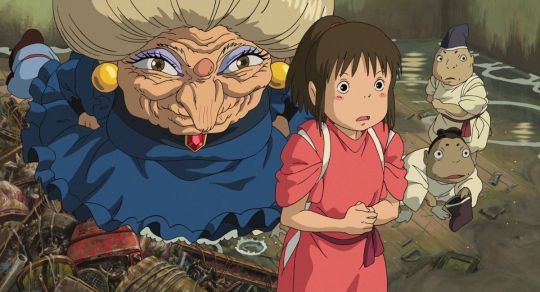
source : Ghibli
This July, Hayao Miyazaki's new movie, "The Boy and the Heron," was released. Reflecting on Miyazaki's previous works, audiences will agree that this new movie is highly anticipated. 'Spirited Away,' which was once referred to as 'Japanese animation for children,' has now ascended to the status of a masterpiece, containing numerous symbols and metaphors. And that's not all. Almost all of Miyazaki's works, such as 'Howl's Moving Castle,' 'Castle in the Sky,' 'Nausicaä of the Valley of the Wind,' and 'Princess Mononoke,' remain etched in our memories. In celebration of his new creation, I will conduct an analysis of all of Miyazaki's past works. This article focuses on 'Spirited Away.'

1. Spirited Away - Basic composition
Starting off with his most recognizable movie, 'Spirited Away', this is my favorite movie among Miyazaki's works, and it is one of my all-time favorite Japanese animations. I saw this movie when I was very young, probably when I was in elementary school. At that time, I was impressed by the cute characters and the warm-hearted drawing style, but I never felt anything more than that. However, coincidentally, I saw it several times again as a high school student, a college student, and after that. Each time, there were different interpretations of the work, and I thought that this movie is not simply a story of a child named ‘Sen’ who goes missing. However, after establishing my own view through the study of the human unconscious and symbols, a firm perspective on this movie was formed. Please consider this one of the many interpretations out there.

The story can be divided into three parts: finding the theme park, working in Yubaba's onsen, and finally returning to normal life. The most important part of this work is the second part, which is about the world ruled by a witch named "Yubaba" who runs a large onsen. In this world, people instantly turn into pigs, and humans have to conceal their own scent (Haku told Chihiro that she shouldn't smell like a human being at the beginning of the movie) and forget their own names, only remembering the names given by Yubaba. What kind of world is this? Let's clearly define this world and, through this definition, discover the various settings of the work and the messages Miyazaki wanted to convey. We can see how Miyazaki describes Japanese society and what is needed there.
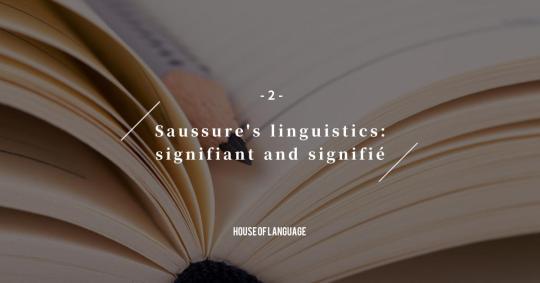
2. Saussure's Linguistics - Signifiant and Signifié
First of all, before discussing this Japanese animation, I believe it is important to address the concepts of signifiant and signifié. While it may initially seem uninteresting, these concepts play a significant role in the overall storyline of this animation, necessitating a brief explanation. The signifiant and the signifié were established by Saussure, a French linguist. In simple terms, the signifiant refers to the sensory aspects of words, such as their letters or pronunciation, while the signifié pertains to the semantic meaning of words. To illustrate, let's consider the word 'sea'. The signifiant in this case would encompass the formal aspects of language, like the letters and pronunciation of the word 'sea', while the signifié would encompass the semantic aspect, meaning that when we hear the word 'sea', we all have the same understanding of what it represents.Now, you may be wondering how Saussure's linguistic concepts relate to Miyazaki's anime and Japanese society.
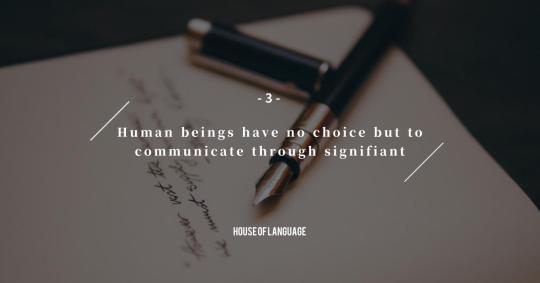
3. Human beings have no choice but to communicate through signifiant.
The signifiant contains the intended meaning (signified), while the signifié refers to the actual content or meaning that is meant. Therefore, we can say that the word 'heart' has the same meaning (signifié) as '♡', but a different signifiant.

(*I am unsure if Saussure also suggested the concept of "signifying" between signifié and signifiant. However, I want to suggest that there is a signifying stage between signifié and signifiant, which is the most important aspect of communication.)
So, we can say that the meaning we want to express(signifié) is conveyed through the signifiant: '♡'. I would like to refer to this action as 'signifying', which is the moment when the signifié transforms into a signifiant. We are constantly engaged in 'signifying' in every moment of our lives, through actions such as speaking and moving. For example, honking the horn at the car in front of you while driving is a form of 'signifying' that expresses anger(signifié). Additionally, our choice of clothing can also be a result of 'signifying'. It represents the expression of certain emotions(signifié) through our attire(signifiant). Even our eye smiles, facial expressions, and gestures are outcomes of 'signifying'. Furthermore, objects like smartphones, societal laws, and group rules can also serve as signifiant, created through the process of 'signifying' the signifié(efforts, desires, etc.) of many individuals. In this way, signifiant encompasses not only simple words or symbols, but also a wide spectrum of tangible and intangible things, such as rules, laws, and mathematical and scientific functions.
(*I want to expand the concept of signifiant to include not only language, but also real artifacts, institutions, rules, and implicit social rules, etc., as they all stem from human signifié.)
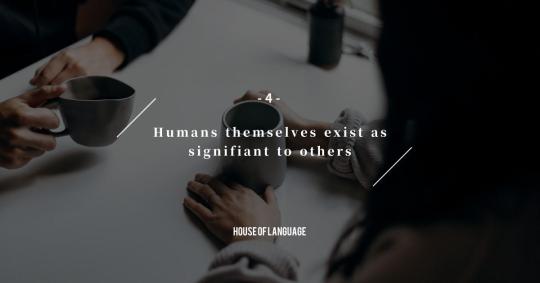
4. Humans themselves exist as signifiant to others.
Not only in terms of linguistics, but also in reality, each of us exists as signifiant to others. Since others cannot fully know or understand one’s mind, there is no way but to express ourselves through signifiant to others. For example, we often express ourselves with business cards when introducing ourselves. Business cards typically display our name, occupation, email, phone number, and so on. To others, these business cards become signifiant. Depending on the person's occupation or the company they represent, we may have positive feelings towards them or not. Consequently, we are drawn to one's signifiant (external and internal conditions but can be recognized). No matter how much we try to create good reasons for liking someone, we cannot go beyond the signifiant that we recognize (appearance, the atmosphere they emit through appearance, social status, etc.). However, there is no right or wrong in recognizing the world and people through signifiant. Because that is all we can do.
Can a business card explain all aspects of a person? Definitely not. However, the reason we still use it is that we cannot write down all of one's contents on paper. Therefore, instead of providing an exhaustive list of all aspects of ourselves, we remove and reduce our self-information to a level that others can accept. This process is known as the 'law of the disappearance of signifié,' which means that signifiant cannot entirely contain the signifié during the process of signifying. Now, with just a bit more explanation, we can return to the topic of Miyazaki’s Japanese animation. Thank you for patiently reading through this complex discussion.

5. Because signifiant come from signifié…….
We communicate with signifiant and believe in signifiant. If that's the case, is the most important thing in the world the signifiant itself? If we prioritize signifiant over the signifié, we should suppress our honest emotions. Instead of expressing our true feelings, we will utter meaningless words within the framework of unspoken rules and societal norms. Although signifiant should be considered as a means to convey our true feelings and intentions (the signifié), they become distorted when solely prioritized. As a result, genuine intentions will be overshadowed, and only superficial significance will be considered. Through the Japanese animation "Spirited Away," we will see how strange a world can become when the aspect of the signifié is completely suppressed by signifiant. Now, let's move on to discussing animation in more detail.
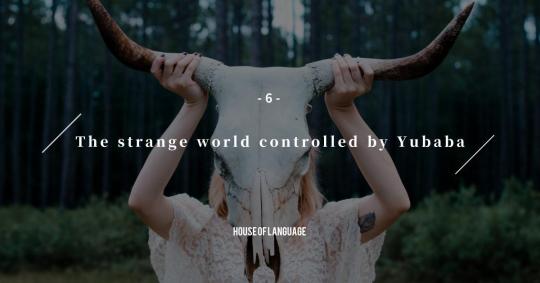
6. A world where signifiant is prioritized all over signifié: The strange world controlled by Yubaba, and the reason why Chihiro's parents become pigs
One example of a scene where we can see the signifié being suppressed and only the signifiant being prioritized is when Chihiro's parents turn into pigs. In the beginning part of the story, Chihiro's parents transform into pigs, and later on, Yubaba explains the reason for this. Yubaba tells Chihiro that her parents turned into pigs because they ate the food prepared for the guests like pigs. While stealing food a little bit is generally illegal, there are rare cases when people receive severe punishment because of that. However, Yubaba states that the severe punishment of losing one's dignity occurs merely by violating the simple rule of 'only guests can eat the food at the shop. It is not because Yubaba particularly dislikes theft or Chihiro’s parents (there is no setting that Yubaba has trauma related to theft or particularly hates Chihiro’s parents), but rather because she reacts with extreme hostility to those who violate intangible signifiants such as laws, order, and rules. Chihiro's parents' intentions (they were hungry and, although they had money, wanted to pay later and eat the food first) were entirely ignored, and only the aspect of not eating the food as guests was considered heavily important. In this way, a society that prioritizes only the signifiant, disregarding the signifié, is a ‘signifiant-centric society’.

Haku: "If you don't eat the food in this world, you will disappear soon."
Furthermore, this dialogue from Haku illustrates that Yubaba's world is a signifiant-centric society. After Chihiro's parents transform into pigs, she flees to the riverside where she cries in sorrow for losing her parents. It is at this moment that Haku appears and tells Chihiro, "If you don't eat food from this world, you will soon disappear." This setting signifies that only those who hold signifiant as a "consumer" can survive in this world, while those who lack signifiant, meaning those who do not exist as a signifiant(social titles like consumer or worker, etc) cannot exist in this world.
The world ruled by the witch, Yubaba, is cruel to individuals who cannot become a certain definite signifiant. Miyazaki skillfully portrays Japan's extremely signifiant-centric tendency in this film.
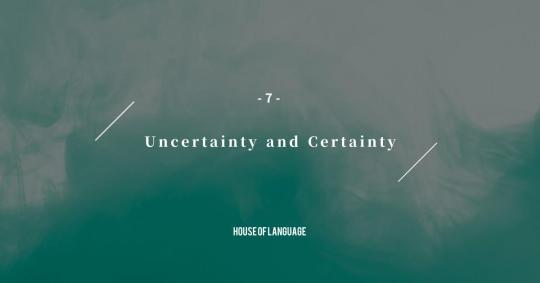
7. Uncertainty and Certainty
As mentioned earlier, we humans must exist as certain beings for others. We should be trustworthy individuals to some, beautiful women, caring fathers, warm mothers, capable colleagues, and close friends to others. Becoming a certain person for others means becoming someone that others can affirm about us. We all receive affirmation from others as certain beings, and we can say it is a kind of connection between ourselves and various entities in the world. For example, let's consider a person named A, who is a school teacher. However, A wants to be very friendly with the students and uses the same casual language and demeanor as when speaking to friends. If this behavior continues, over time, the students may stop showing respect to her as a teacher, and A may also receive feedback from colleagues or superiors about her tone and manner. This could be seen as A breaking implicit social rules and failing to establish the proper identity for herself as a teacher (one's stance, intonation, and attitude are also part of one's identity). However, when she returns home, she no longer needs to be the 'teacher.' She only needs to exist as a 'mother' to her children and as a 'wife' to her husband (considering other aspects of her identity and gender roles, assuming A is a heterosexual woman with a husband). We need to become specific identities for specific entities, but this can vary depending on the context, and there is no rule that says we must be defined by a single identity.
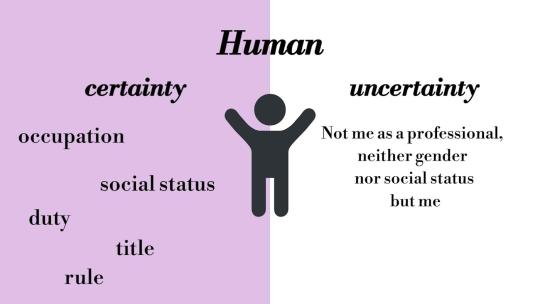
The reason for this is that humans have both certain and uncertain aspects. Being someone's mother does not mean you must act as a mother 24/7. Being an employee of a company does not mean you must always act as an employee. Being someone's friend does not mean you must always be their friend in every situation. If someone asks you, as a 'student,' to live every moment for 'studying' to fulfill your social role, it becomes a form of 'violence' rather than advice. We need to live as specific entities for specific purposes, but at the same time, we must also respect and protect our own uncertainties. If humans had no uncertainties, we would become mere slaves or puppets.
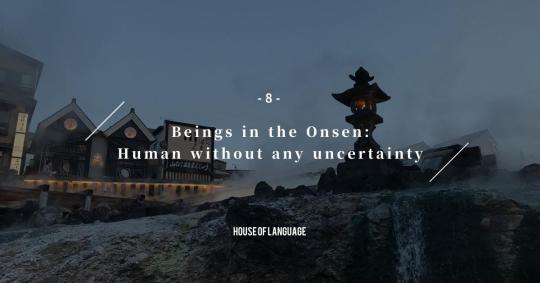
8. Beings in the Onsen : Humans turned into perfect signifiant, who doesn’t have any uncertainty
In this sense, the guests who come to Yubaba's onsen are the very people who have lost all their uncertainty and have become perfect identities filled with certainty (perfect signifiant). Since this movie is from Japan, we can interpret them as representing people living in Japanese society. In the early part of the movie, we can see some interesting settings when the guests, referred to as "gods" in the story, disembark from the boat and head towards Yubaba's onsen. For example, in one scene, the guests, who are referred to as "gods," are initially shown as transparent bodies with big masks. However, as the boat's doors open, their individual forms gradually become visible as the transparency fades away. We can interpret this phenomenon as showing that only when these "gods" take on the social status of being guests at the onsen, can they exist in Yubaba's world. The director used this scene to convey the idea that Yubaba's world is a place where beings with a 100% percentage of certainty can be accepted, filled with signifiant without any uncertainty. In this world, only social roles (functions) and social statuses exist as living beings, not just for humans but even for the great forces of nature like the river (referring to Haku's transformation). Haku, before entering Yubaba's world, was just a river named "Kohaku," but after entering the witch's world, he had no choice but to find his own social role and eventually became a messenger of Yubaba by learning magic from her. This shows that in the witch's world, not only humans but even natural beings like a river must perform their social roles as a single fixed identity; otherwise, they lose their dignity and the reason for their existence. Therefore, the witch's world is not a place where humans live, but a world where only social roles (functions) and social statuses exist as the sole essence of entities. This could be linked to the reason why the director chose to depict Haku's identity as "a river," providing an even more extreme example of a signifiant-centric world in Yubaba's realm.
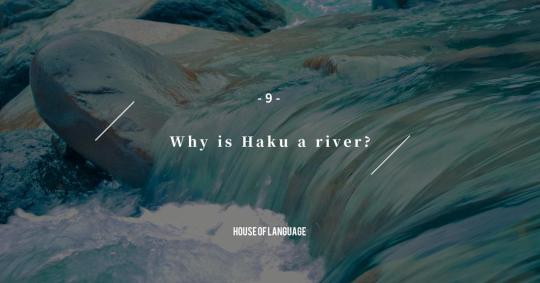
9. Why is Haku a river?
The moment when Haku's identity is revealed is the climax of the entire film, making it the most crucial moment in the entire story. Although it is still a moving scene for us, some sensitive viewers may find it somewhat puzzling. Haku's identity is revealed to be the "Kohaku River," the place where Chihiro lost her shoe when she was a child. While it remains a touching moment, someone might wonder why the director did not go for a more natural setting, such as portraying Haku as another family member from Chihiro's forgotten memories or a boy she had fond memories of. The director took this risk and inserted the setting of Haku being the "river" to firmly establish his perspective on the "witch's world," even if it broke the predictability of the story, like for example, Haku is her forgotten lover or something at least not "a river."On the official Ghibli website, we can find information that aligns with this perspective, stating that Haku accepted his body being torn apart as his destiny in accordance with the worldview of "everything must follow the rules." This supports the idea that in Yubaba's world, even more so than humans, all of nature itself loses all uncertainty and turns into a perfect signifiant, driven by the extreme focus on role-centricity, which is also significant-centricity (as previously mentioned, rules are also one type of signifiant). Just as Chihiro's parents lost their dignity by breaking a very small rule, Haku faced severe punishment for breaking a rule (signifiant).

10. The World Dominated by Yubaba: an extremely signifiant(social role, rule)-centric society, Japanese society
Therefore, all beings in the world dominated by Yubaba exist not as complete humans but only as social roles, functions, and statuses. That is why most of the existing beings in this world do not possess the full, complete appearance of a human. Humans are originally beings who embody both uncertainty and certainty, but in Yubaba's world, they became a kind of 'distorted' existence that had all uncertainty removed and must pursue only certainty. They are beings that are supposed to become complete signifiant. However, as we all know, even though their appearances differ from humans, their actions are just the same as those of humans. Therefore, the appearance of those characters can be seen as a mere metaphor. Furthermore, the more their appearances are distorted from human form, the more pronounced their distortion as signifiant becomes.
For example, if we look at Kama(the spider-shaped old man), his appearance perfectly matches his job. Even the tiny soot sprites working with him have fully optimized their appearance to match their low social status and the job they do. Besides them, every being in Yubaba's world, except Chihiro, becomes a complete signifiant based on their assigned social functions and positions. Miyazaki expresses this by describing their appearance differently from humans. As this movie is a Japanese animation, we can interpret Yubaba's world as representing Japanese society. Actually, Japan is a society where signifiant plays a massive role in shaping social norms, cultural behaviors, and interactions. For example, we can see that many people follow their family businesses that have been inherited for hundreds of years, and they accept it without any resistance. This is one example that shows how Japanese people obey the signifiant and are controlled by it rather than following their own signifié.
In Japan, people are controlled by explicit and implicit rules, which are significant, rather than by their intrinsic values and desires. Many aspects of Japanese society can be seen as derived from this significant-centric nature. However, I will omit detailed explanations here. These aspects originated from a collective neurosis that formed over a thousand years when the samurai and their masters ruled. During that time, everyone needed to be devoted to their assigned roles to survive, as samurai had the freedom to commit murder, torture, rape, and other acts. Therefore, people had to be solely devoted to their assigned roles to avoid disturbing the samurai's emotions, as it was the only way for them to survive.
However, there are advantages to this signifiant-centric society, but Miyazaki seems to be more focused on its disadvantages. One advantage is that in such a society, there is some degree of trust in the products produced according to signifiant. For example, if you go to a restaurant in Japan, the chances of going to a place that serves bad food are low. In a signifiant-centric society, the level of taste in food, for example, is like a fixed rule, and people can expect a certain high quality of flavor. This extends not only to food but to all products made in the country. Japanese products, regardless of the type, are generally loved and trusted by people all over the world. It is widely known that Japanese products are generally considered to have good quality due to an implicit trust created by the signifiant-centric society.
In addition, when following the manual properly in any task, one advantage is that you are somewhat free from responsibility. In Japanese society, which is centered around guidelines like Japan, there is a kind of ‘manualization’ even in areas where one would typically rely on individual non-verbal and social skills. Therefore, for relatively passive, introverted individuals, it can be an advantage to be free from responsibility to some extent if you just act according to the manual. However, for active and extroverted individuals, it can feel suffocating and limit their freedom. There is less room for personal discretion and explicit involvement in such a society.
A drawback of significant-centric societies is that individuals' freedom and emotional expression are restricted. Due to the limitations imposed on the process of 'signifying'(when one's signifié becomes signifiant), personal desires and emotions become narrowed and suppressed. Expressing one's desires and emotions through 'signifying' is a fundamental desire for humans. We consciously and unconsciously create various kinds of signifiant and communicate with them. Actions, speech, thoughts, and everything are part of the 'signifiant' that comes from our minds. Therefore, the state of not expressing one's signifié to signifiant is replaced by psychological and neurological suffering for humans. Hence, in extremely significant-centric societies like Japan, many people not only lack freedom but also often find that their emotions are suppressed. This can lead to collective neuroses and, in severe cases, evolve into collective mental illness. In fact, Japan is known for having the highest number of psychiatric beds per capita.
(https://www.researchgate.net/figure/Psychiatric-beds-per-100-000-population-The-number-of-psychiatric-beds-in-Japan-in_fig1_346056916 )
Signifiant typically represents the result of expressing(signifying) desires(signifié). However, in extreme signifiant-centric societies, only signifiant exists by itself, isolated from signifié and signifying. Signifiant that is detached from signifié and signifying is separated from the human mind(desires), and this oppresses humans at the unconscious level. In extreme signifiant-centric societies, it is often the case that signifiant(rules) have a high degree of detachment from desires and are not originated from the human mind. This also leads to the guidelines themselves harming humans, causing numerous mental disorders and injuries. If a person gets suppressed by signifiant that has no relation to their own signifié, their identity eventually collapses because the connection between their symbolic world(inner world) and the real world (outer world) is destroyed. Miyazaki made a character who became disconnected between their symbolic world and the real world in the movie: 'No Face'. No Face is actually the most severe victim of a signifiant-centric society because he doesn’t have any connection between his symbolic world and the real outer world. So his signifié remains unresolved, accumulating within him until it eventually manifests in sudden, aggressive behaviors without any easily understandable context.
People whose signifié and signifiant are disconnected are more likely to have deviant desires and have a hard time communicating with others. That is why he ate all the workers and tried to eat Sen like a monster. Moreover, when No Face returns to a normal state, he cannot speak a single word. This detailed portrayal reflects the author’s meticulousness because 'word' is one of the most fundamental tools for conveying signifié to others.
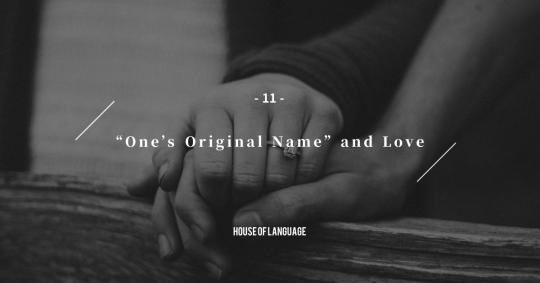
11. “One’s Original Name” and Love
The only way to escape Yubaba's world is by remembering one's own name. As one loses their original name, the possibility of escaping Yubaba's control approaches zero. In this Japanese animation, one's original name is emphasized as a crucial clue. What meaning does a name hold for us? People have certainty, but we also have infinite uncertainty. Thus, there is no way to define each individual with a single word completely. Any attempt to define a person with a single word is an act of violence and oppression. Therefore, we each create a 'name' to encompass our own infinite uncertainty, defining our existence, albeit loosely. A name holds this significance for us.Respecting these names is a kind of affection. It is the respect and consideration of an individual's infinite uncertainty that cannot be contained by a name alone. This is a way of embracing a person's existence as an existence itself, and it might be the ideal way of communicating with the world that Miyazaki envisions. Therefore, we must remember our own names more than ever. Those who try to forget their own names or erase them and replace them with other names are not respecting others but instead deceiving and subjugating others beneath their own feet. We communicate through signifiant, but we must not think that signifiant are everything. We should not define others through guidelines they hold, and we ourselves should not be completely defined by signifiant created by others.
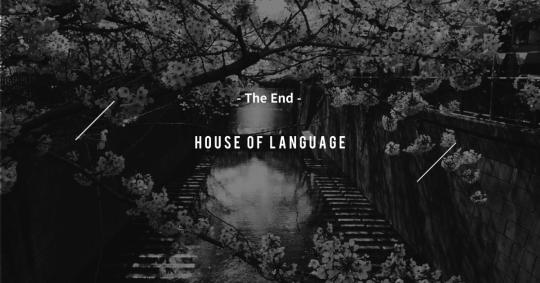
If you enjoyed this article, please consider supporting me for more great articles.
Paypal: @jtk111
1 note
·
View note
Text


“you don’t remember your name?”
“no, but for some reason i remember yours.”
#spirited away sen#sen spirited away#haku spirited away#spirited away haku#spirited away bath house#spirited away#ghibli spirited away#sen#chihiro#spirted away chihiro#chihiro spirited away#ghibli#spirited away ghibli#studio ghibli#chihiro ghibli#sen ghibli#no face#haku#yubaba#spirited away redraw#studio ghibli redraw#redraw#redraw challenge#anime redraw#bathhouse#hayao mizayaki#hayao miyazaki#ghibli redraw#chihiro bathhouse#miyazaki movie
45 notes
·
View notes
Text
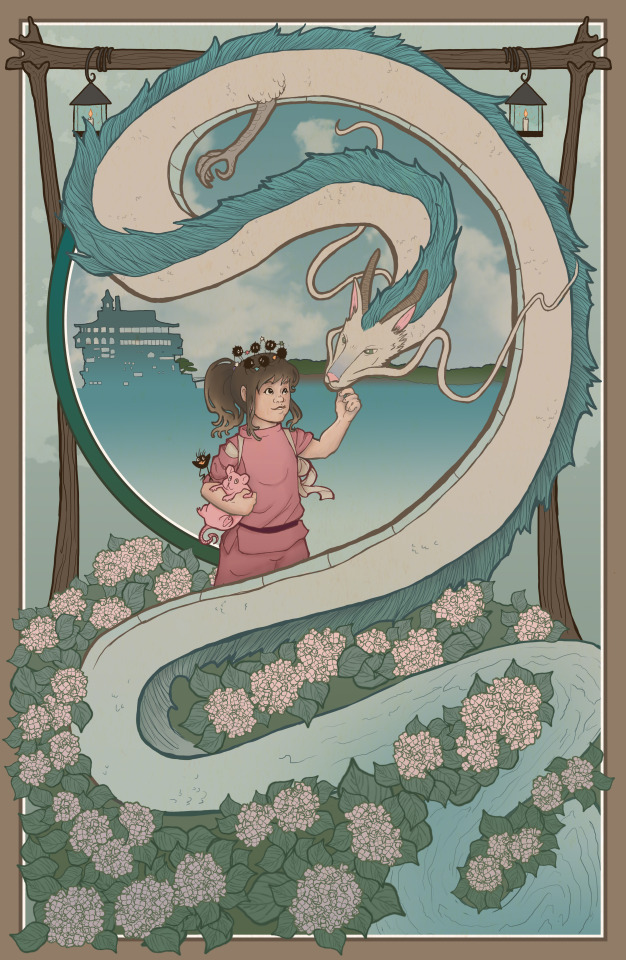
Spirted Away is absolutely my favorite Miyazaki film. Also who else wants a soot sprite floral crown??? I can't give you that but you can get this print here.
#spirted away#hayao miyazaki#studio ghilibi#sen#sen no chihiro#chihiro#haku#anime#spirted away fanart#art nouveau fanart#art nouveau#art nerdveau#atomic pixies#spirted away art nouveau
96 notes
·
View notes
Photo


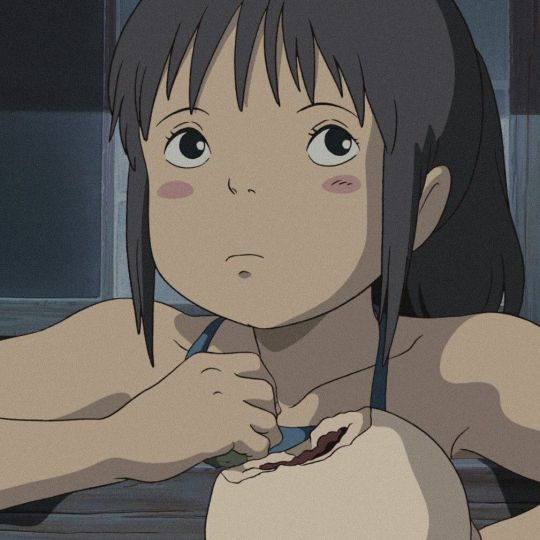




「誰かに会ったら、本当に忘れることはありません。思い出が戻ってくるまでには少し時間がかかります。」
-𝘳𝘦𝘣𝘭𝘰𝘨/𝘭𝘪𝘬𝘦 𝘰𝘧 𝘺𝘰𝘶 𝘴𝘢𝘷𝘦 !✧ -𝙛𝙚𝙚𝙡 𝙛𝙧𝙚𝙚 𝙩𝙤 𝙪𝙨𝙚 𝙗𝙪𝙩 𝙞𝙩 𝙬𝙤𝙪𝙡𝙙 𝙗𝙚 𝙖𝙥𝙥𝙧𝙚𝙘𝙞𝙖𝙩𝙚𝙙 𝙞𝙛 𝙮𝙤𝙪 𝙜𝙖𝙫𝙚 𝙘𝙧𝙚𝙙𝙞𝙩𝙨 !✧
#chihiro ogino icons#Chihiro Ogino#chihiro spirited away#spirited away#spirted away#spirited away icons#ghibli inspired#ghibli#studio ghibli#studio ghibli movies#ghibli films#studio ghilibi#ghibli movie#icons#anime#90s anime#ghibli animation#anime icons#anime layouts#anime aesthetic#animecore#ghibligif#ghibli aesthetic#ghibli icons#ghibli style#messy layouts#soft layouts#random layouts#twitter layouts#anime packs
239 notes
·
View notes
Photo

Mateko - Studio Ghibli - Spirited Away - Haku & Chihiro Ogino
#Mateko#Miyazaki Hayao#Studio Ghibli#sen to chihiro no kamikakushi#spirted away#Haku#Chihiro Ogino#Ogino Chihiro#Boy and Girl#Girl and Boy#Couple#Girl#Female#boy#male#pony tail#t-shirt#shorts#smile#smiles
22 notes
·
View notes
Text

I wanted to glass painting and i thought it would be neat if i did the train scene in spirited away so the train is going through various places. Right now its late at night and its raining c:
My bad for the slight finger prints at the top
#painting#acyrlicpainting#glassart#glass painting#studio ghibli#no face#spirted away#passenger train#choo choo#next destination in 15 mins#doodle#drawing#art#i just think it neat#a5#smol#chihiro ogino#ghost and spirits#cute
27 notes
·
View notes
Text
Artist: monafinden
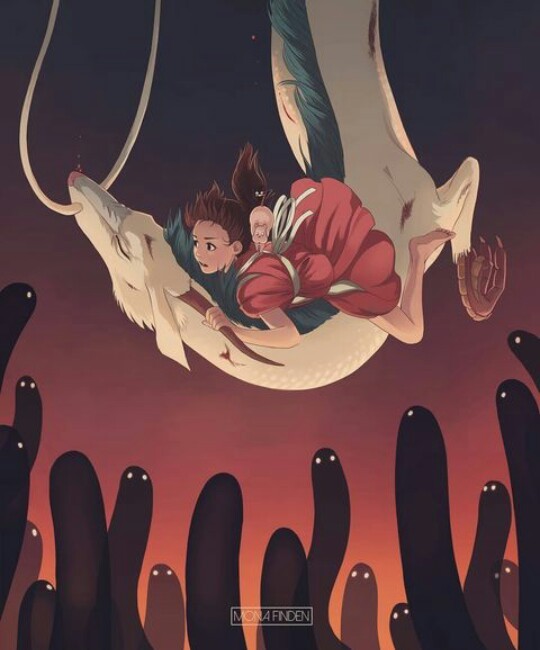
#wallpaper#digital art#digital painting#arte digital#fan art#studio ghibli#ghibli#spirted away#chihiro#haku#kohaku#dragon
31 notes
·
View notes
Text
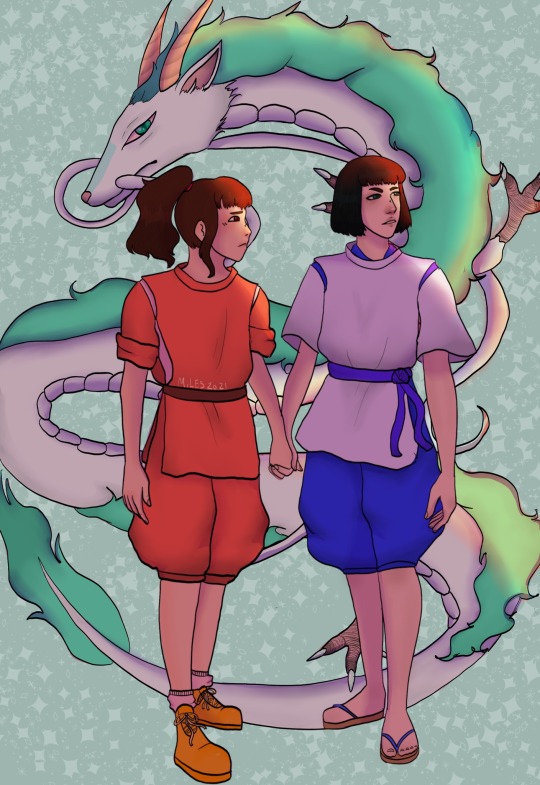
Spirited away is definitely my favorite film from my childhood.
#spirted away#spirted away fanart#haku spirited away#chihiro spirited away#studio ghibli#ghibli art#ghibli fanart#studio ghibli fanart#anime art#anime fanart#fanartist#fanart#digital art#digital aritst#trans artist#gay artist#teen artist
13 notes
·
View notes
Text

4 notes
·
View notes
Text

Small excerpt from my poem Chihiro, dedicated to my favorite Studio Ghibli protagonist Chihiro.
#chihiro fujisaki#studio ghibli#spirted away#spilled ink#my work#poems#writers on tumblr#poetry#words#aesthetic#anime
17 notes
·
View notes
Text

I’m in a mood
13 notes
·
View notes